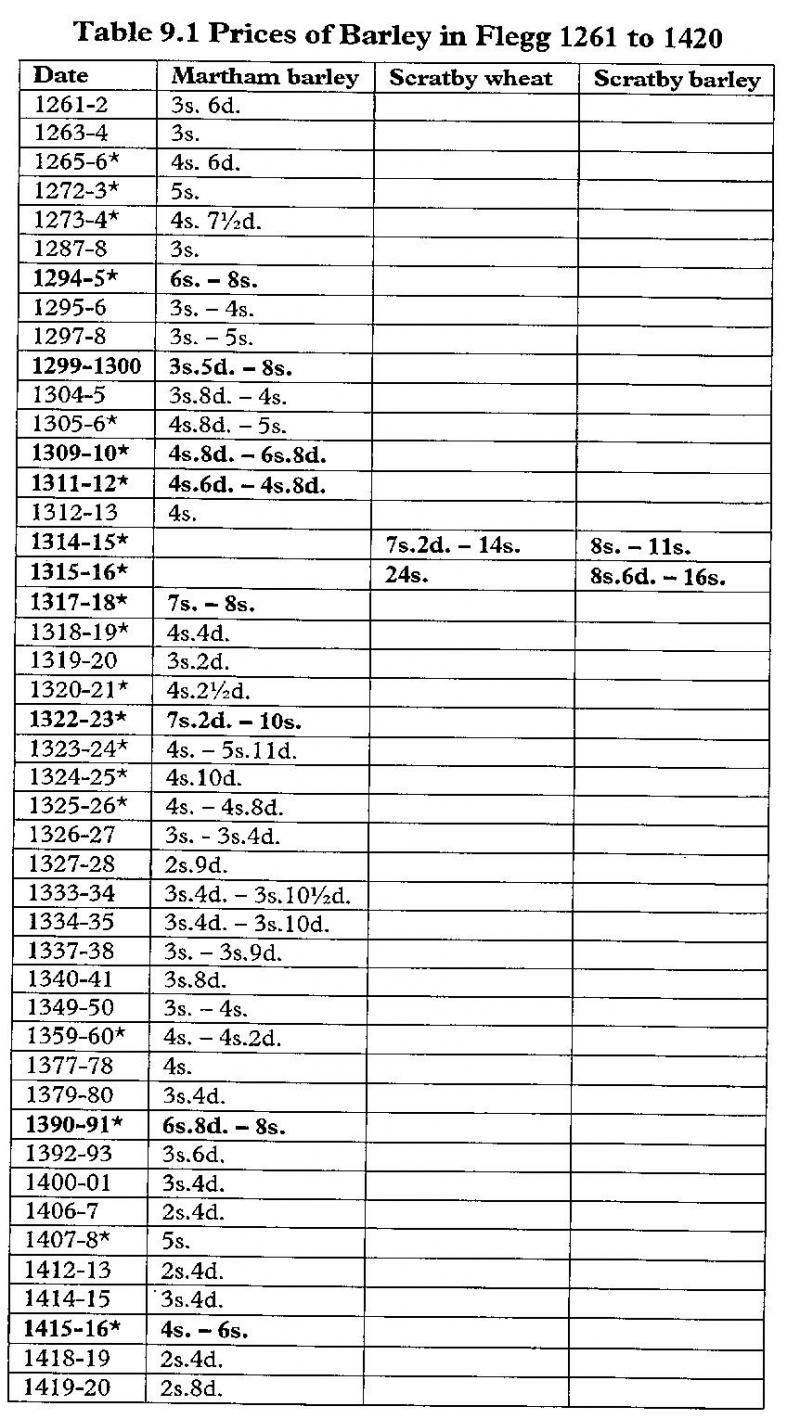THE ORIGIN OF THE NORFOLK BROADS
A CLASSIC CASE OF CONFIRMATION BIAS
BILL SAUNDERS
The Origin of the Norfolk Broads - a classic case of Confirmation Bias
mallards
Appendix 3: Barley Prices

Prices per quarter = 8 bushells = c. one fifth of a ton. Source: Cornford, 2002
"The earliest record of the price of corn is from the accounts of the St.Benet's manor at Ashby in 1245 when it sold for 3s. 4d.. This seems to have been the usual price for most of the thirteenth century." Cornford, 2002
"The starred dates are those in which the price of barley rose above 4s. a quarter. The years and figures in bold are years in which the price rose above 6s. a quarter, price which many peasant families could hardly afford." ibid.
The prices from Scratby are shown for comparison because no information was recorded in the Martham Accounts for these two years of famine.
back to: "The Price of Peat"
Copyright 2009 The Medieval Making of the Norfolk Broads. All rights reserved.
The Origin of the Norfolk Broads - a classic case of Confirmation Bias
mallards